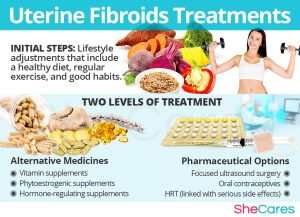Summary:
- Uterine fibroids are common, noncancerous tumors influenced by hormones.
- Symptoms vary, including heavy menstrual bleeding and pain, though many fibroids are asymptomatic.
- Treatment options range from observation to medication and surgery.
- Types of fibroids differ based on their location and attachment within the uterus.
Uterine fibroids, also known as leiomyomas, are a prevalent type of noncancerous tumor that can develop in and around the uterus. While the exact cause remains unknown, it is widely believed that the hormones estrogen and progesterone play a significant role in their development. Fibroids predominantly occur in individuals of reproductive age, with studies indicating that they tend to grow during periods of high hormone levels, such as pregnancy, and shrink when hormone levels decrease, such as during menopause.
Not all fibroids cause symptoms. When symptoms do occur, they can include heavy menstrual bleeding, back pain, frequent urination, and pain during intercourse. Typically, small fibroids do not require treatment, but larger fibroids may need to be addressed with medication or surgery. Despite their potential to cause discomfort, fibroids are usually benign and represent the most common type of noncancerous tumor in women and people assigned female at birth (AFAB).
The symptoms of uterine fibroids can vary widely. They may cause pain and heavy, irregular vaginal bleeding, but some individuals may remain asymptomatic and unaware of their condition. Treatment approaches for fibroids generally depend on the severity of symptoms experienced.
Types of Uterine Fibroids:
- Intramural Fibroids: These are the most common type, embedded in the muscular wall of the uterus.
- Submucosal Fibroids: These grow beneath the inner lining of the uterus.
- Subserosal Fibroids: Found under the outer surface lining of the uterus, these can grow large and extend into the pelvis.
- Pedunculated Fibroids: The least common type, these are attached to the uterus by a stalk or stem, resembling mushrooms.

Image courtesy- She cares
Most small fibroids are asymptomatic and require no treatment other than regular monitoring by a healthcare provider. However, larger fibroids can lead to various symptoms, including:
- Excessive or painful menstrual bleeding.
- Intermenstrual bleeding.
- A feeling of fullness or bloating in the lower abdomen.
- Frequent urination due to bladder pressure.
- Pain during sexual intercourse.
- Lower back pain.
- Constipation or rectal pressure.
- Chronic vaginal discharge.
- Difficulty emptying the bladder completely.
- Abdominal distention that may resemble pregnancy.

diet plan sample
Typically, the symptoms of uterine fibroids stabilize or diminish after menopause due to the decline in hormone levels.
Fibroids are very common, affecting approximately 40% to 80% of people with a uterus. They are most frequently diagnosed in individuals aged 30 to 50. Fibroids are rare before the onset of menstruation and less common after menopause.
By Barasa Saenyi
